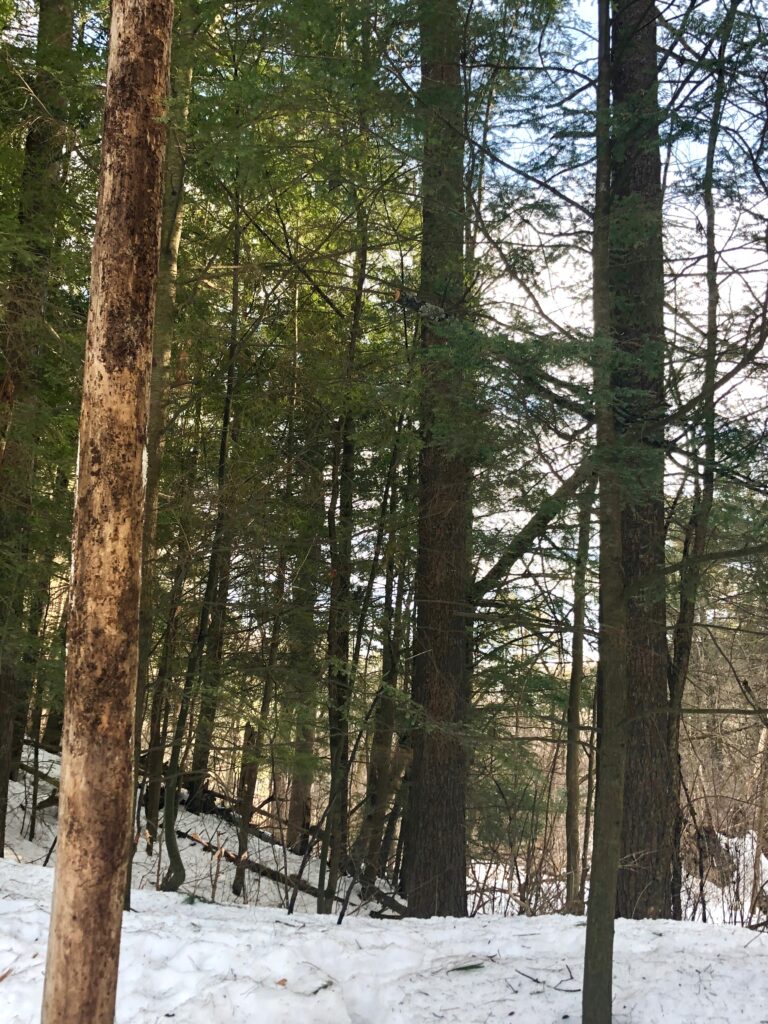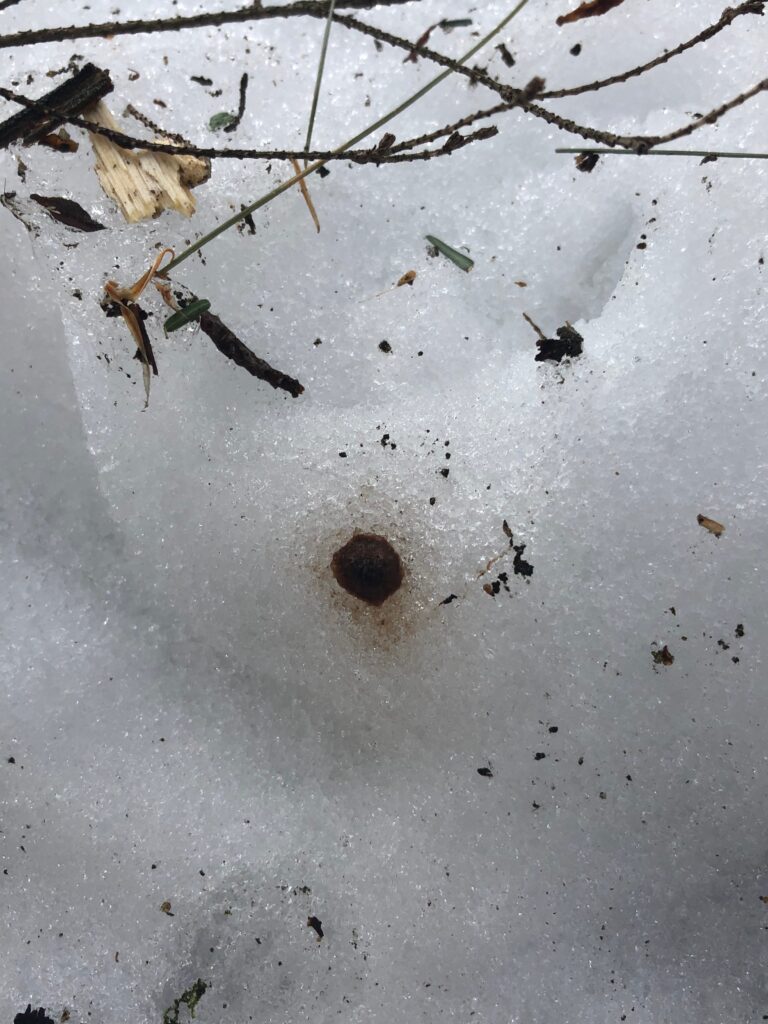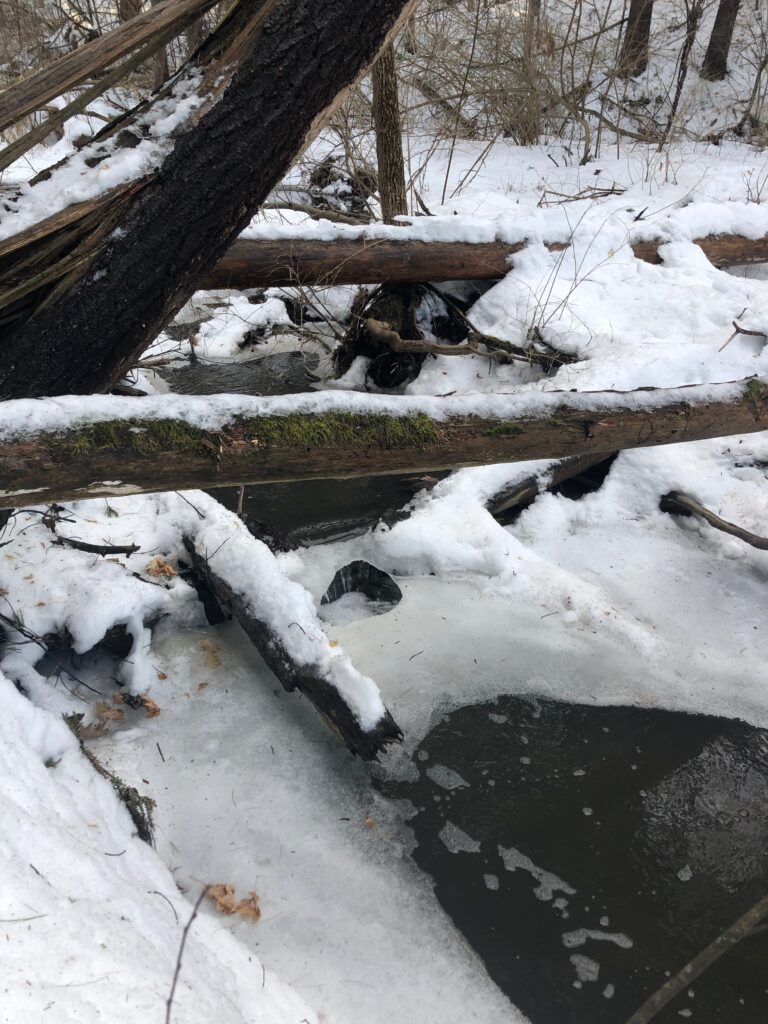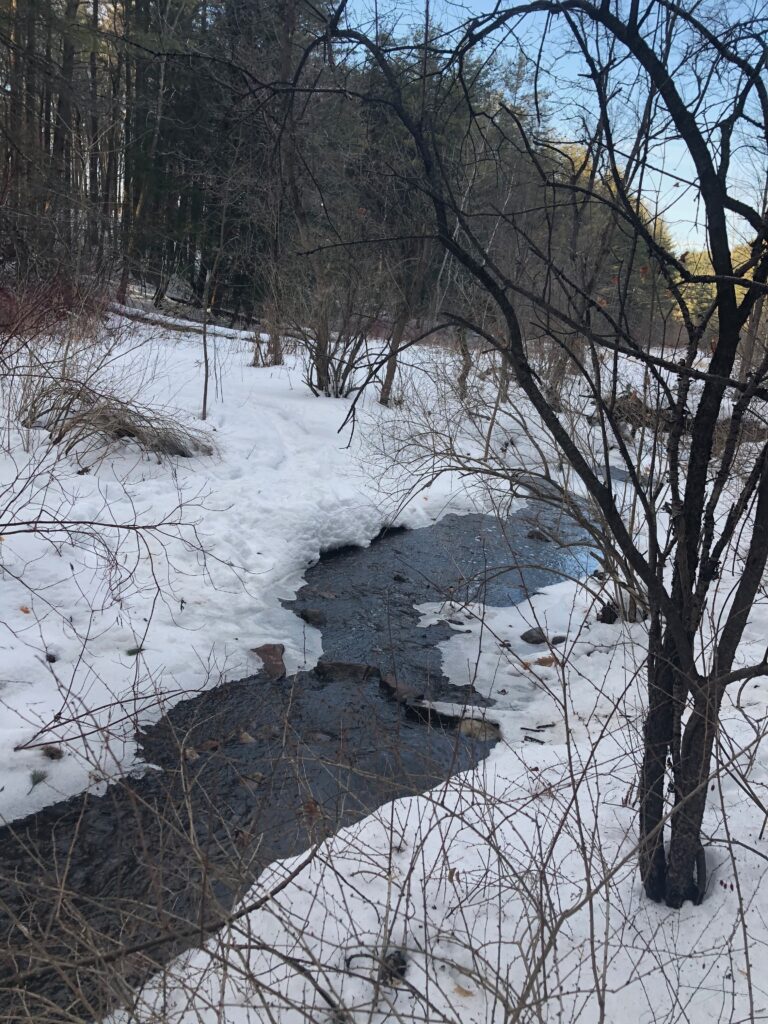On this particular February Monday after a cold and snowy weekend, the clouds dissipated and the sun returned. With 50º temperatures and blue skies, I decided there was no better day to spend the afternoon in Centennial.

Figure 1: Evergreen trees of Centennial. February 24, 2020. 
Figure 2: Sunshine in Centennial. February 24, 2020
In February, most organisms have not yet awoken for spring, and snow still persists on the forest floor. Animal tracks were difficult to find due to the hardened, refrozen snow on the ground and lack of recent snowfall, but I did find signs of rabbits in my spot. Though the rabbit would be too small to break the icy surface of the frozen snow, I did find some scat. Rabbits do not hibernate during the winter, so they are active all winter looking for food. They burrow holes into the ground or live in dead trees or hollow logs to stay warm, and their main predators are predatory birds like hawks, owls, and falcons, and small mammals like foxes and weasels. They are herbivores, eating primarily grasses, clovers, fruits, seeds, roots, and any other ground-level plants they can get their hands on. During winter when these types of food sources are scarce, so they rely more on tree bark, twigs, and pine needles. Tree bark missing from the bottom of trees is an indicator that rabbits are nearby. They also eat their own poop because an excellent source of Vitamin B! (Carter, 2019.)

Figure 3: Rabbit scat. February 24, 2020
There have not been many phenological changes since my last visit in January because it is still cold and snowy outside. However, the ice that completely covered the waterfall and brook has melted slightly, giving hope of spring in the near future. The brook was fuller and running faster than last time from melting snow. The trees are still bare, aside from the pine and hemlock trees growing on the hill.

Figure 4: Melting ice over the waterfall.
February 24, 2020.
Figure 5: Ice over the brook has melted. February 24, 2020.
Sources: Carter, L. (2019, December 15). Where Do Wild Rabbits Go in the Winter Time? Retrieved from https://www.rabbitcaretips.com/where-wild-rabbits-go-in-winter/
Recent Comments